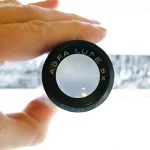They say a picture is worth a thousand words. When it comes to content marketing, we’d argue that it’s worth even more. A good header image is arguably imperative for the creation of compelling, engaging content, and high-quality photos are important for breaking up the monotony of large walls of text.
You can’t just find any old photo and throw it in, though. A good stock photo needs to be relevant. It needs to work with and enrich your writing in some fashion.
Perhaps more importantly, you need to make sure you properly attribute any imagery you use, and that you have the rights to use it. For that reason, before we get into an explanation of how to find stock photos, we’ll touch on where. Fortunately, there are a ton of great sources for royalty-free imagery.

You should use them all.
With that out of the way, let’s talk about your search.
We’ll assume you’ve already done your keyword research. You likely know what search phrases people will use to find your article. You can also use those keywords to find images. Do a quick search on your chosen stock photo websites. Use your core keywords and any variations you can think of.
You can potentially also expand and refine your search by finding related terms via a tool like Answer the Public, Keyword Sheeter, or Also Asked.
This is really only a starting point, though. It’s great to have a header image that’s tied to your keywords, but inline photos should have a bit more nuance to them. Depending on your writing style, you may want to insert an image either every 250 words, below each header, or below every other header. For these photos, consider the context in which they’re being placed.
What’s being said in this section of your piece? What visuals would help make your message more helpful or engaging? For instance, let’s say you’re writing a piece about artificial intelligence, and you’re adding a photo to a section talking about the risks of the technology.
You might go for something on-the-nose,
Such as a Terminator or HAL-9000. You might settle for a vaguely-threatening stock photo of a cybernetic humanoid, or even a picture of a human hacker. The important thing is that you conceptualize this photo not as independent from your writing, but as an extension of it.
The other most important thing about stock photos is to ensure proper attribution. Check the usage rights for every photo you find, and be sure to include the author’s name (and potentially the website) as a source. Never use a photo without attribution or one for which you do not know the source, as this is a good way to get yourself hit with a copyright claim.
Finally, you may occasionally have content for which good stock photos are seemingly impossible to find. In such situations, it may be worthwhile to set aside some of your budget for a subscription to a premium service like Shutterstock. Generally, paid libraries have a larger selection of available photos and more variety within that selection.




